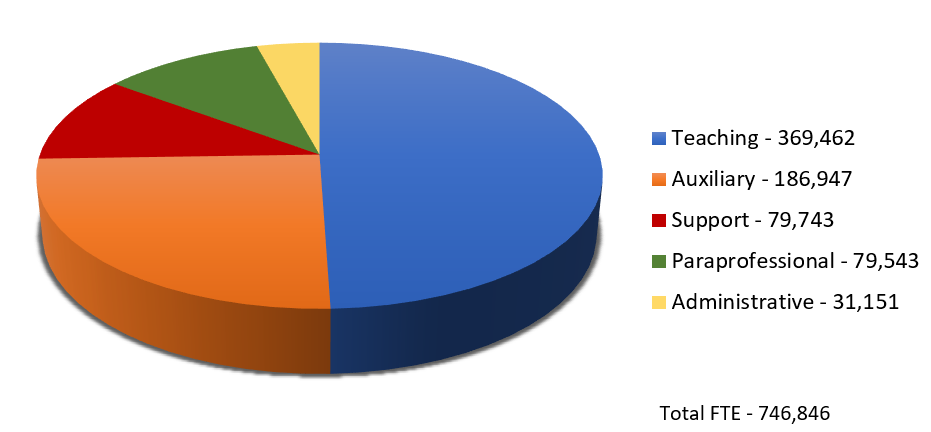Each District should review their controls over stipends to ensure they are effective as well as monitor stipends on a regular basis. If controls are not implemented and operating effectively, the funding may be used in a manner that puts the students at more of a risk than they already are.
When you stop to think about the number of individuals it takes to operate a school district effectively and efficiently, it is mind-bending. Enrollment in the State of Texas in the 2020-2021 school year consists of approximately 5.4 million children. Within that 5.4 million, there are special populations including At Risk, bilingual, dyslexic, economically disadvantaged, English learners, English as a second language, children in foster care, gifted and talented, homeless children and special education children. The special populations are approximately 9.3 million, which means many of the children fall into more than one special population. Five days a week, these children arrive at their campuses with the expectation they will have a safe environment and be taught effectively. The chart below illustrates the total FTE’s for the 2020-2021 school year by category. It’s no surprise that payroll makes up 75 to 85% of district’s budgets.

For each district to maintain the staffing levels needed, base salaries need to be supplemented to attract the special skills required to provide that safe and effective environment for the students. In addition to base salaries, Districts will pay stipends and other types of extra-duty pay for special skills, certifications, and additional programs such as after-school care and extracurricular activities. These incentives encourage and attract highly educated individuals as well as provide incentives for additional time spent with the students outside of the normal classroom time. It is easy to see why these stipends and additional pays are needed. It is also easy to see how, with the number of individuals receiving them, that monitoring and internal controls over additional pay is vital to ensure they are paid correctly.
First and foremost, each District should maintain a Board approved stipend list to ensure individuals are paid consistently. Using a specified object or sub object to track stipends and extra-duty pay will make it easier to differentiate regular salaries from stipends and extra-duty. This is will make it easier for the District to track these costs. The District should perform analytical procedures from year to year., including stipends and extra-duty as a percentage of base salaries. Reviewing this at the District-wide level is important, but it should also be looked at by campus. This would help the District identify an increase in stipends that could indicate missing or weak controls over stipends
Controls over stipends will depend on how the stipends are maintained. Many of the stipends are tied to an employee’s education, special certification, and position. If they hold and maintain that certification, the stipend is attached to their pay. In this situation, the focus of the control would be proof of certification on an annual basis to ensure the certification is maintained and has not expired since most certifications require continuing education to stay current.
Other stipends can change from year-to-year. Department heads, extracurricular activities, extra-duty, coordinators, etc., are not attached to a position, but rather to an individual. Not only can these change each year but can change during the year as well. The controls in place over these may seem tedious or labor intensive at times but maintaining controls over who is receiving them ensures the funds are being used effectively and accurately.
Written procedures should be in place clearly defining who is responsible for monitoring and reporting those individuals eligible to receive the additional pay. We have seen different approaches to the way in which stipends are maintained in the financial system. Some Districts will leave the stipends attached to the individual when their contract is renewed. The HR department, on an annual basis will send the listing to the appropriate department head, principal or director and require their confirmation that the individuals are still performing the required duties to receive the stipend. Other Districts will remove all stipends on an annual basis and only initiate them when the updated listings are received from the departments. In addition to identifying the responsible individuals, timeliness should be included in the control along with actions to remove the pay if no response is received. The Districts must set the tone from the top down in adhering to policies and controls. It’s no secret, that many times, those individuals not involved in the accounting side of the entity may be more focused on operations, rather than the steps that need to be taken to ensure compliance with internal controls over the financial side. Having defined controls and consequences when those controls are not followed help to set the tone and keep them operating effectively.
Each District should review their controls over stipends to ensure they are effective as well as monitor stipends on a regular basis. If controls are not implemented and operating effectively, the funding may be used in a manner that puts the students at more of a risk than they already are. If the emphasis is not placed on the individuals responsible for monitoring those receiving stipends, it can jeopardize the continued funding, as well as trickle into other areas as it relates to controls.

